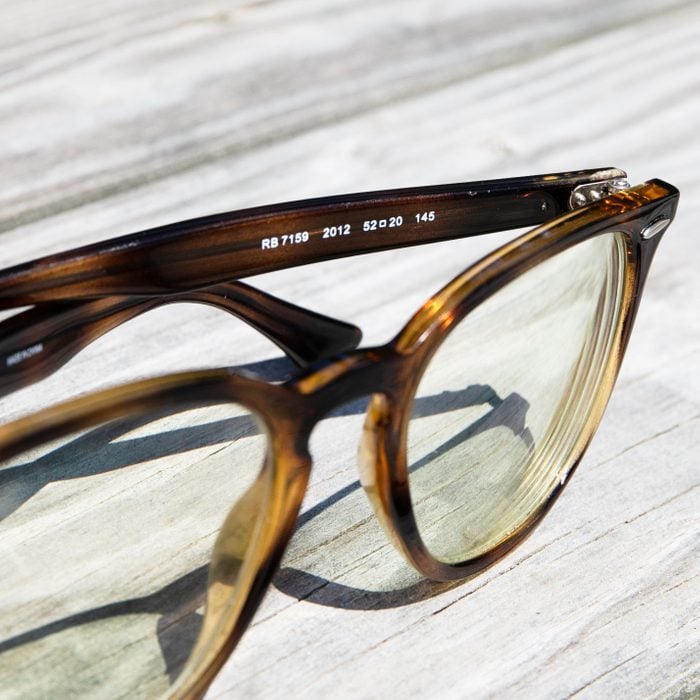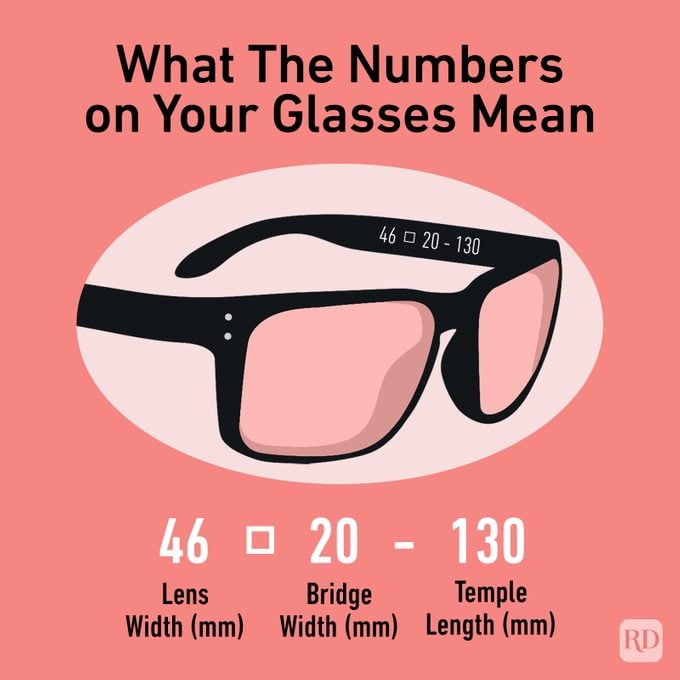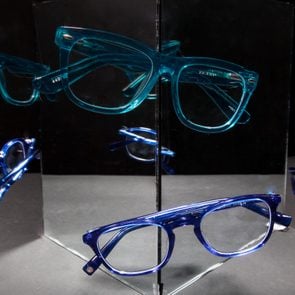This Is What Those Numbers on Your Glasses Mean
Updated: Mar. 13, 2023

The numbers on your eyewear are more important than you think.
Hey, you, with the glasses! Have you ever noticed those tiny numbers printed on the arm of your frames? It might not always be important for the consumer to be familiar with the numbers on their products like a toaster or tires, but in the case of eyewear, those numbers can actually tell you a lot about your frames. Whether you have distance glasses, reading glasses, polarized sunglasses, or even blue light glasses, your eyewear is more than just a prescription. Knowing what these numbers mean can be especially important if you want to buy glasses online. So, let’s break it down. Either way, you can add some new interesting facts to your repertoire.
What do the little numbers on your glasses mean?
“On a typical pair of glasses, you’re going to find three measurement numbers, usually in the form of AA-BB-CCC (not the official designations for these numbers, just what I’m using to make it clearer),” explains optometrist Jonathan Wolfe from Ardsley, NY. He explains that the numbers represented by AA correspond to the measurement of your eye size. This would be the width horizontally of the opening on one eye. This number typically ranges from 42-58mm. The larger the value, the larger the frame.
The second number represented by BB measures the distance between the right and left lens, which usually ranges from 16-24mm.
Lastly, the CCC value is the length of the arms, usually between 130-150mm. The larger your head, the greater that number is so your glasses can sit comfortably on your face. Find out more secrets your eye doctor won’t tell you.

Why is this important to know?
“A common misconception among patients is that their eye size is fixed and that if the eye size of their current glasses is, say, 54 (and they like how they look), then they need their new glasses to be a 54 as well,” says Wolfe. “This is not necessarily the case, since the AA and BB values interact with each other.”
Everyone comes in different shapes and sizes, and that includes the dimensions of your face. A pair of glasses that works well for one person may not fit comfortably for another. These simple facial measurements make finding a pair of snug glasses easier for the patient.
“For example, you may have a very rectangular frame with an eye size of 56, and a 16mm distance between lenses,” explains Wolfe. “If you wanted to switch to a rounder look, you may get a similar fit with a frame that has an eye size of 50, but an 18mm distance between the lenses. This is why it’s important to try frames on in person, rather than simply going by the eye size number of your current glasses.”
Especially when looking to purchase a new pair of glasses online, most people focus on the optical prescription. Don’t get us wrong, the prescription is essential, but making sure the glasses sit correctly on your face is just as important. While you can use these sizes as a guide, every pair of glasses is different, so if you’re looking for the best fit, definitely seek the guidance of a professional. Next, see if you can use FSA or HSA for glasses before you check out.
Sources:
- Jonathan Wolfe, Ardsley Eye Care



